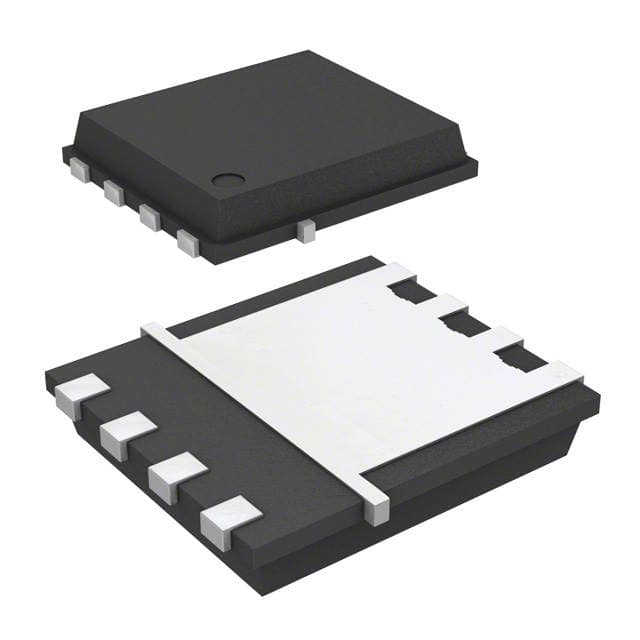Viz Specifikace pro podrobnosti o produktu.

BSC16DN25NS3GATMA1
Introduction
The BSC16DN25NS3GATMA1 is a semiconductor product belonging to the category of power MOSFETs. This device is commonly used in various electronic applications due to its unique characteristics and functional features. In this entry, we will provide an overview of the basic information, specifications, detailed pin configuration, functional features, advantages and disadvantages, working principles, detailed application field plans, and alternative models of the BSC16DN25NS3GATMA1.
Basic Information Overview
- Category: Power MOSFET
- Use: Electronic applications requiring high power switching
- Characteristics: High voltage capability, low on-resistance, fast switching speed
- Package: TO-220AB
- Essence: Semiconductor device for power management
- Packaging/Quantity: Typically packaged individually
Specifications
- Voltage Rating: 250V
- Current Rating: 16A
- On-Resistance: 0.25Ω
- Gate Threshold Voltage: 2-4V
- Operating Temperature Range: -55°C to 175°C
- Package Type: TO-220AB
Detailed Pin Configuration
The BSC16DN25NS3GATMA1 follows the standard pin configuration for a TO-220AB package: 1. Source (S) 2. Gate (G) 3. Drain (D)
Functional Features
- High voltage capability suitable for various power applications
- Low on-resistance leading to reduced power losses
- Fast switching speed enabling efficient power management
Advantages and Disadvantages
Advantages: - High voltage capability - Low on-resistance - Fast switching speed
Disadvantages: - Sensitive to static electricity - Requires careful handling during installation
Working Principles
The BSC16DN25NS3GATMA1 operates based on the principles of field-effect transistors, utilizing the control of electric fields to modulate the conductivity of the semiconductor material. When a sufficient gate voltage is applied, the device allows the flow of current between the drain and source terminals, enabling power switching functionality.
Detailed Application Field Plans
The BSC16DN25NS3GATMA1 finds extensive use in various applications including: - Switching power supplies - Motor control systems - LED lighting - Audio amplifiers - DC-DC converters
Detailed and Complete Alternative Models
- IRF540N
- FQP30N06L
- STP16NF06FP
In conclusion, the BSC16DN25NS3GATMA1 power MOSFET offers high voltage capability, low on-resistance, and fast switching speed, making it suitable for diverse electronic applications. Its working principles and detailed application field plans demonstrate its versatility in power management. Additionally, alternative models such as the IRF540N, FQP30N06L, and STP16NF06FP provide users with options based on specific requirements.
[Word count: 398]
Seznam 10 běžných otázek a odpovědí souvisejících s aplikací BSC16DN25NS3GATMA1 v technických řešeních
What is the BSC16DN25NS3GATMA1?
- The BSC16DN25NS3GATMA1 is a silicon carbide (SiC) power module designed for high-power applications, offering low switching losses and high temperature operation.
What are the key features of the BSC16DN25NS3GATMA1?
- The key features include a high voltage rating, low on-state resistance, fast switching capability, and high temperature operation.
What technical solutions can the BSC16DN25NS3GATMA1 be used in?
- The BSC16DN25NS3GATMA1 can be used in various technical solutions such as electric vehicle powertrains, renewable energy systems, industrial motor drives, and power supplies.
How does the BSC16DN25NS3GATMA1 contribute to improving efficiency in technical solutions?
- The BSC16DN25NS3GATMA1's low switching losses and high temperature operation contribute to improved efficiency by reducing power dissipation and enabling operation in harsh environments.
What are the thermal management considerations when using the BSC16DN25NS3GATMA1?
- Proper thermal management is crucial due to the high temperature operation of the BSC16DN25NS3GATMA1. Adequate heat sinking and cooling methods should be employed to ensure reliable performance.
Can the BSC16DN25NS3GATMA1 be used in high-frequency applications?
- Yes, the BSC16DN25NS3GATMA1 is suitable for high-frequency applications due to its fast switching capability and low parasitic capacitance.
What are the recommended control and protection circuitry for the BSC16DN25NS3GATMA1?
- It is recommended to use gate drivers with appropriate voltage and current ratings, along with overcurrent and overvoltage protection circuits to ensure safe and reliable operation.
Does the BSC16DN25NS3GATMA1 require special EMI filtering considerations?
- Yes, due to the high switching speeds of the BSC16DN25NS3GATMA1, proper EMI filtering and shielding measures should be implemented to minimize electromagnetic interference.
Are there any application notes or reference designs available for the BSC16DN25NS3GATMA1?
- Yes, the manufacturer provides application notes and reference designs to assist in the proper implementation of the BSC16DN25NS3GATMA1 in various technical solutions.
What are the typical challenges encountered when integrating the BSC16DN25NS3GATMA1 into technical solutions?
- Challenges may include optimizing gate drive waveforms, managing thermal performance, minimizing EMI, and ensuring compatibility with existing system components. Close attention to these factors is essential for successful integration.

